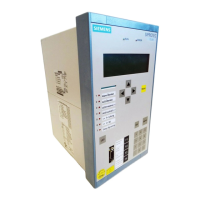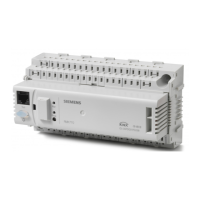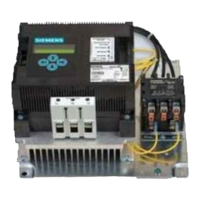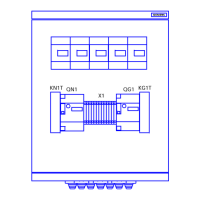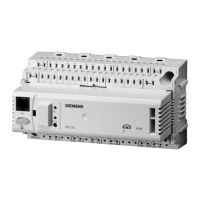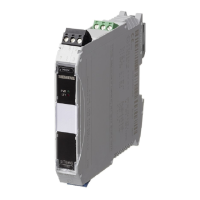(1) Description of Operation 7SR224
Page 18 of 66 ©2009 Siemens Protection Devices Limited
Section 3: Protection Functions
3.1 CURRENT PROTECTION: PHASE OVERCURRENT (67, 51, 50)
All phase overcurrent elements have a common setting to measure either fundamental frequency
RMS or True RMS current:
True RMS current: 51/50 Measurement = RMS
Fundamental Frequency RMS current: 51/50 Measurement = Fundamental
3.1.1 Directional Control of Overcurrent Protection (67)
The directional element produces forward and reverse outputs for use with overcurrent elements.
These outputs can then be mapped as controls to each shaped and instantaneous over-current
element.
If a protection element is set as non-directional then it will operate independently of the output of the
directional detector. However, if a protection element is programmed for forward directional mode then
operation will occur only for a fault lying within the forward operate zone. Conversely, if a protection
element is programmed for reverse directional mode then operation will occur only for a fault lying
within the reverse operate zone. Typically the forward direction is defined as being ‘away’ from the
busbar or towards the protected zone.
The Characteristic angle is the phase angle by which the polarising voltage must be adjusted such
that the directional detector gives maximum sensitivity in the forward operate zone when the current is
in phase with it. The reverse operate zone is the mirror image of the forward zone.
Voltage polarisation is achieved for the phase-fault elements using the quadrature voltage i.e. at unity
power factor I leads V by 90
°
. Each phase current is compared to the voltage between the other two
phases:
I
L1
~ V
23
I
L2
~ V
31
I
L3
~ V
12
The characteristic angle can be user programmed to any angle between -95° and +95° using the 67
Char Angle setting. The voltage is the reference phasor (V
ref
) and the 67 Char Angle setting is added
to this to adjust the forward and reverse zones.
The centre of the forward zone is set by (V
ref
Angle + 67 Char Angle) and should be set to correspond
with I
fault
Angle for maximum sensitivity i.e.
For fault current of -60
°
(I lagging V by 60
°
) a 67 Char Angle of +30
°
is required for maximum
sensitivity (i.e. due to quadrature connection 90
°
- 60
°
= 30
°
).
OR
For fault current of -45
°
(I lagging V by 45
°
) a 67 Char Angle of +45
°
is required for maximum
sensitivity (i.e. due to quadrature connection 90
°
- 45
°
= 45
°
).
Two-out-of-three Gate
When the 67 2-Out-Of-3 Logic setting is set to Enabled, the directional elements will only operate for
the majority direction, e.g. if I
L1
and I
L3
are detected as forward flowing currents and I
L2
is detected as
reverse current flow, phases L1 and L3 will operate forwards, while phase L2 will be inhibited.
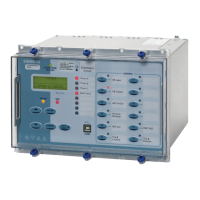
